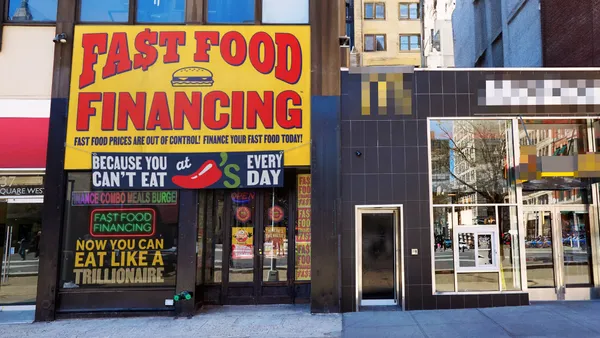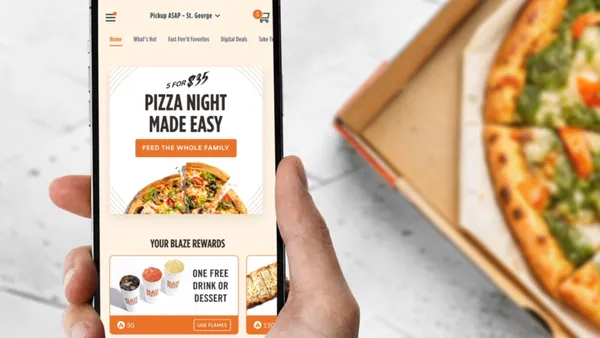With hundreds of thousands of restaurant locations throughout the United States, diners have no shortage of options on what to eat or where to order from. That's why restaurant marketing is so essential.
But modern restaurant marketing entails a lot more than creating ads or maintaining a social media page. It requires restaurants to leave their comfort zones, test new tactics and measure what moves the needle.
The first step in that process is researching new tactics and deciding what to test. Here are eight restaurant marketing tactics to try in 2022.
1. Redesign Your Website
More than 75% of diners visit a restaurant's website before deciding where to dine. They may search for the restaurant specifically, search for restaurants in their area or get there via referral links — but no matter how they arrive, the restaurant needs to leave a strong impression.
The design should be compelling and true to the brand. The content should tell a story and communicate pertinent information. And the user experience should make it easy for diners to navigate pages — especially to pages with revenue-driving features like direct online ordering.
Click here to view some of last year's best redesigned restaurant websites.

2. Invest in Email Marketing
The primary benefit of direct online ordering is that restaurants avoid third-party commission fees. The secondary benefit — which is nearly as important — is that restaurants capture diner information such as email addresses.
As direct online ordering grows more popular, this gives restaurants a valuable opportunity to expand their email marketing efforts. New technologies make this easier than ever. Restaurants can actually automate email marketing, sending emails and promotions based on how long it's been since someone has ordered (e.g., 7 days after ordering).
Dough Artisan Pizza, a pizzeria in Caldwell, New Jersey, sees $96 in revenue for every diner that clicks on one of its automated email offers. That's modern restaurant marketing in a nutshell.
3. Create a Digital Loyalty Program
Restaurants should aim their marketing at more than prospective customers. They should also market to past customers. The higher a restaurant's lifetime customer value (LCV), the fewer customers it needs to break a profit.
Studies have shown that diners pay 92% more when enrolled in a restaurant's loyalty program, and new tools are making it easier than ever for restaurants to start one. With the right digital loyalty software, they can send emails to past diners with incentives to earn points and unlock offers. It's a perfect extension of their email strategy.
The best part? Setting up a digital loyalty program isn't nearly as daunting as it sounds. According to Geoffroy Raby, the owner of Cuisinett Bistro & Market, BentoBox's digital loyalty program "took two minutes to turn on." In other words: setup and complexity should not be a barrier to increasing lifetime customer value.
4. Lean Into Word-of-Mouth Marketing
Sometimes, a restaurant's customers are its best marketing channel. After all, 86% of consumers trust word-of-mouth marketing.
At its core, word-of-mouth marketing requires an excellent guest experience, which makes it slightly different from other marketing tactics. This is especially important in the age of social media, as consumers are more likely to share a negative experience than a positive one.
One specific way to turn customers into marketers is by selling wearable restaurant merchandise like hats, shirts and hoodies. Brooklyn pizza restaurant Di Fara, for example, sells Dodgers-style shirts through its online merchandise store, turning patrons into walking billboards for the business.

5. Leverage New Social Networks & Features
It wasn't so long ago that Instagram was new, and restaurants were doubting its value. Now, it's accepted as a major part of every restaurant's marketing strategy.
TikTok looks poised to follow in Instagram's footsteps, and restaurants would be wise to take it seriously. It exploded during the pandemic, surpassing 1 billion users in far less time than Facebook and Instagram did. Succeeding requires an authentic video content strategy, but if you have one, as Boston brewery Night Shift does, the organic reach is unmatched.
Elsewhere, the older networks continue adding valuable features. Facebook and Instagram now allow restaurants to place an "Order Now" button on their pages and "Order Now" stickers in their stories. Better yet, with the right software, restaurants can connect those ordering buttons directly to their direct online ordering platform. Click here to learn more about how that works.
6. Develop a Review Response Strategy
Responding to reviews is hardly fun — particularly when they're negative. However, a thorough review response strategy can prevent a restaurant from losing customers before it has the chance to engage with them. This is because if someone is searching for a restaurant on Google, Yelp, Facebook or TripAdvisor, one bad review can be enough to cause uncertainty.
The tactic here? Set aside 10 minutes every day (yes, every day) to respond to reviews, whether they are positive, negative or mixed. Doing this shows how committed the restaurant is to learning from customers and acting on their feedback. Plus, great review responses can change peoples' minds after the fact. Note how a speedy response from the team at Mazra brought this Yelp reviewer's rating up one star.

7. Embrace the Community
There are countless people in a restaurant's area that the restaurant hasn't served. Direct mail, local PR and transportation ads can help bridge that gap, but sponsorships are an overlooked tactic — particularly as the world clamors for more in-person connection.
Whether it's local school, sporting or charity events, restaurants can position themselves as an integral and supportive part in their community through sponsorship. Restaurants can also bring the events in-house with revenue-sharing nights for local organizations. Chipotle does this by pledging 33% of sales on fundraising dates for those looking for support.
8. Repurpose User-Generated Content
User-generated content (UGC) combines elements of social media marketing and word-of-mouth marketing. The practice turns fans and into a restaurant's marketers by sharing their photos, videos, posts and reviews on the restaurant's own channels. This shows that guests love the restaurant so much they're willing to post about it.
Better yet, when a restaurant shares UGC on social media, it can easily repurpose that content to its website — provided its website has an integration. California chicken restaurant Baba's demonstrates this on its home page, which automatically integrates with its Instagram content.

Because it's created by customers, UGC also reduces the amount of time restaurants spend creating content themselves. As restaurants learn to operate with fewer employees, little efficiencies like this add up.










